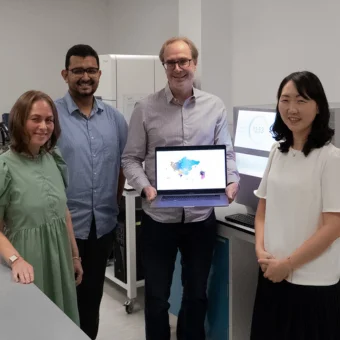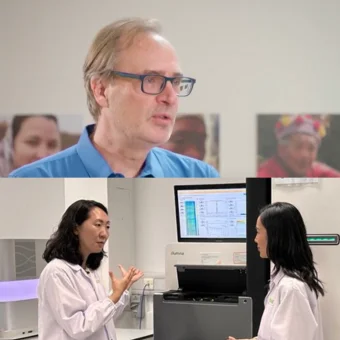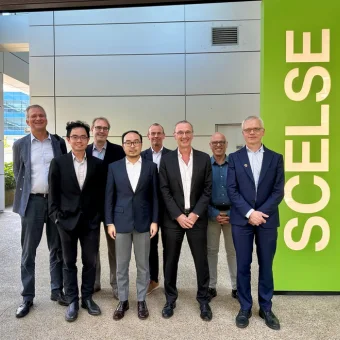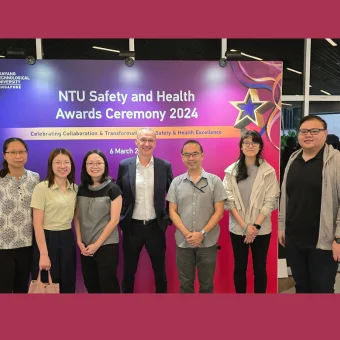Finding the missing factor in wastewater treatment
Wu says. “I only knew that there are bacteria in there, which are very small and are doing their jobs to clean up the water.”
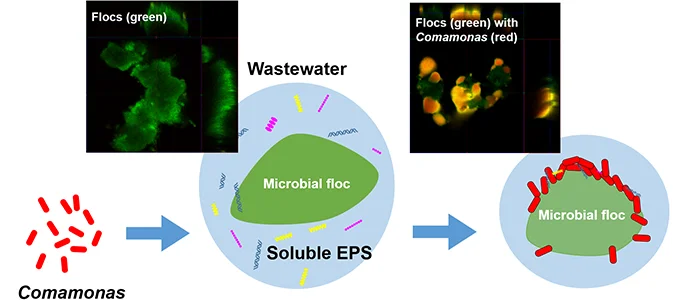
(Graphic: Wu Yichao)
- Featured
- 31 Jul 2020
In 2008, Wu Yichao was taking his first dive into the field of wastewater treatment. As an undergraduate student in the civil engineering department of Southeast University in Nanjing, China, Wu was spending his school days learning design calculation of wastewater treatment plants. But the undergraduate lacked the fundamentals, or so he says today, in retrospect.
“I was designing the treatment processes, but I didn’t know what the reactions inside were or how bacteria functioned in these processes,” Wu says. “I only knew that there are bacteria in there, which are very small and are doing their jobs to clean up the water.”
The undergraduate wanted to delve deeper. In 2013, Wu took on a PhD at SCELSE in A/Prof Cao Bin’s lab, with a mind towards studying the fundamental mechanisms of the wastewater treatment process. Six years later, Dr Wu Yichao published his findings investigating one such potential mechanism.
The chemical complexity of real wastewater has been attributed as a critical factor in inducing distinct effects on microbial community development as compared to the chemically defined media of synthetic wastewater prepared in the lab. Wu’s postgraduate work at SCELSE, published in Environmental Science & Technology at the end of April this year, sought to address other potential and hitherto neglected factors in real wastewater that could contribute to different biofilm processes too.
Picking apart the mechanism
To pick out potential factors, the team at SCELSE compared the influence of real wastewater and synthetic wastewater on a model wastewater bacterium Comamonas testosteroni added to the bioreactors. A target pollutant was also included in the wastewater mixes.
In the first cycle after the bioreactors were fed with the wastewater, both real and synthetic wastewater systems could degrade the target pollutant within 24 hours. This equal efficiency in degrading the pollutant suggested that the catabolic activity of C. testosteroni was not affected by either wastewater.
However, in the second cycle, only 60-percent was removed from the synthetic wastewater system after 24 hours while the reactors fed with real wastewater had a removal efficiency of around 100-percent. Further only a small number of C. testosteroni cells were found on established wastewater flocs in synthetic wastewater by the end of the first and second cycles while most flocs in real wastewater were covered by them.
The differences in degradation performance in synthetic wastewater could thus be attributed to the low retention of augmented bacterial cells in the flocs, and also suggest underlying chemical factors in real wastewater that enhance the retention rate of the exogenous C. testosteroni bacteria.
To look at the influence of the two wastewater matrices on bacterial floc formation, pure cultures of C. testosteroni were cultivated in a biofilm matrix, with visible flocs forming only in real wastewater within 2 hours. Under continuous flow conditions, a 3D heterogenous biofilm structure was observed in real wastewater but only a thin layer of bacterial cells formed in flow cells supplied with synthetic wastewater. The results of these subsequent flow cell experiments also suggested the presence of a biofilm-promoting factor in the real wastewater matrix.
Picking out the missing factor
To identify the factors behind this enhanced bacterial biofilm and floc formation in real wastewater, ultrafiltration was performed to exclude the high molecular weight fraction of the soluble extracellular polymeric substances (EPS) from real wastewater. “We found that after filtration, the bacteria were not likely to form biofilms or retain onto the flocs, which meant that these high molecular weight biopolymers were likely to be the potential factor that contributes to the different fates of C. testosteroni,” explains Wu.
Further analysis by the team also showed that cells taken from the real wastewater were more hydrophobic than those in synthetic wastewater. This suggests that in the presence of a soluble EPS, the bacterial cell surface becomes more hydrophobic, allowing for the attachment of planktonic cells and floc formation. This shows that soluble EPS enhances biofilm formation and bacterial retention in bioaugmentation.
Identifying this missing factor and picking apart the mechanism that reveals the contribution of soluble EPS in real wastewater and to higher bacterial retention could be advantageous in managing and bioaugmenting microbial communities in wastewater treatment.
“Wastewater treatment is an interesting research area where bacteria are engineered and utilised for the goodness of mankind and the environment, and it is also one of the most active but least understood processes,” says Dr Wu, today an associate professor of environmental engineering at Huazhong Agricultural University in Wuhan, China.
“There are many potential factors in these biofilm processes that we don’t know about but perhaps we could manipulate the biofilm processes after understanding these factors and control the community assembly of wastewater biofilms to benefit our treatment of them.”
LINK:
Wu, Yichao, et al. Responses of Exogenous Bacteria to Soluble Extracellular Polymeric Substances in Wastewater: A Mechanistic Study and Implications on Bioaugmentation. Environmental Science & Technology (2020). DOI:
10.1021/acs.est.0c0001
